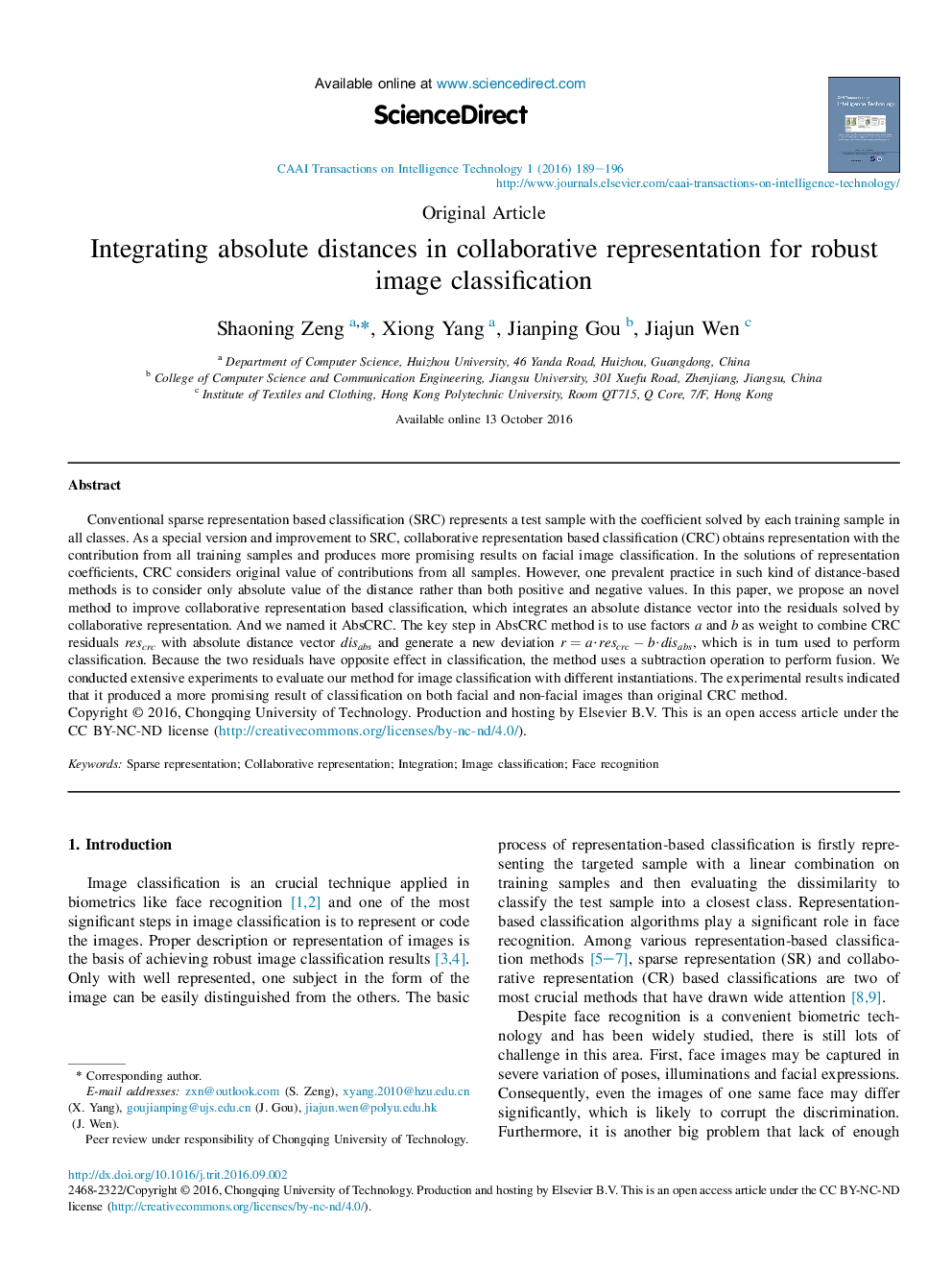| Article ID | Journal | Published Year | Pages | File Type |
|---|---|---|---|---|
| 6853636 | CAAI Transactions on Intelligence Technology | 2016 | 8 Pages |
Abstract
Conventional sparse representation based classification (SRC) represents a test sample with the coefficient solved by each training sample in all classes. As a special version and improvement to SRC, collaborative representation based classification (CRC) obtains representation with the contribution from all training samples and produces more promising results on facial image classification. In the solutions of representation coefficients, CRC considers original value of contributions from all samples. However, one prevalent practice in such kind of distance-based methods is to consider only absolute value of the distance rather than both positive and negative values. In this paper, we propose an novel method to improve collaborative representation based classification, which integrates an absolute distance vector into the residuals solved by collaborative representation. And we named it AbsCRC. The key step in AbsCRC method is to use factors a and b as weight to combine CRC residuals rescrc with absolute distance vector disabs and generate a new deviation r=a·rescrcâb·disabs, which is in turn used to perform classification. Because the two residuals have opposite effect in classification, the method uses a subtraction operation to perform fusion. We conducted extensive experiments to evaluate our method for image classification with different instantiations. The experimental results indicated that it produced a more promising result of classification on both facial and non-facial images than original CRC method.
Keywords
Related Topics
Physical Sciences and Engineering
Computer Science
Artificial Intelligence
Authors
Shaoning Zeng, Xiong Yang, Jianping Gou, Jiajun Wen,
